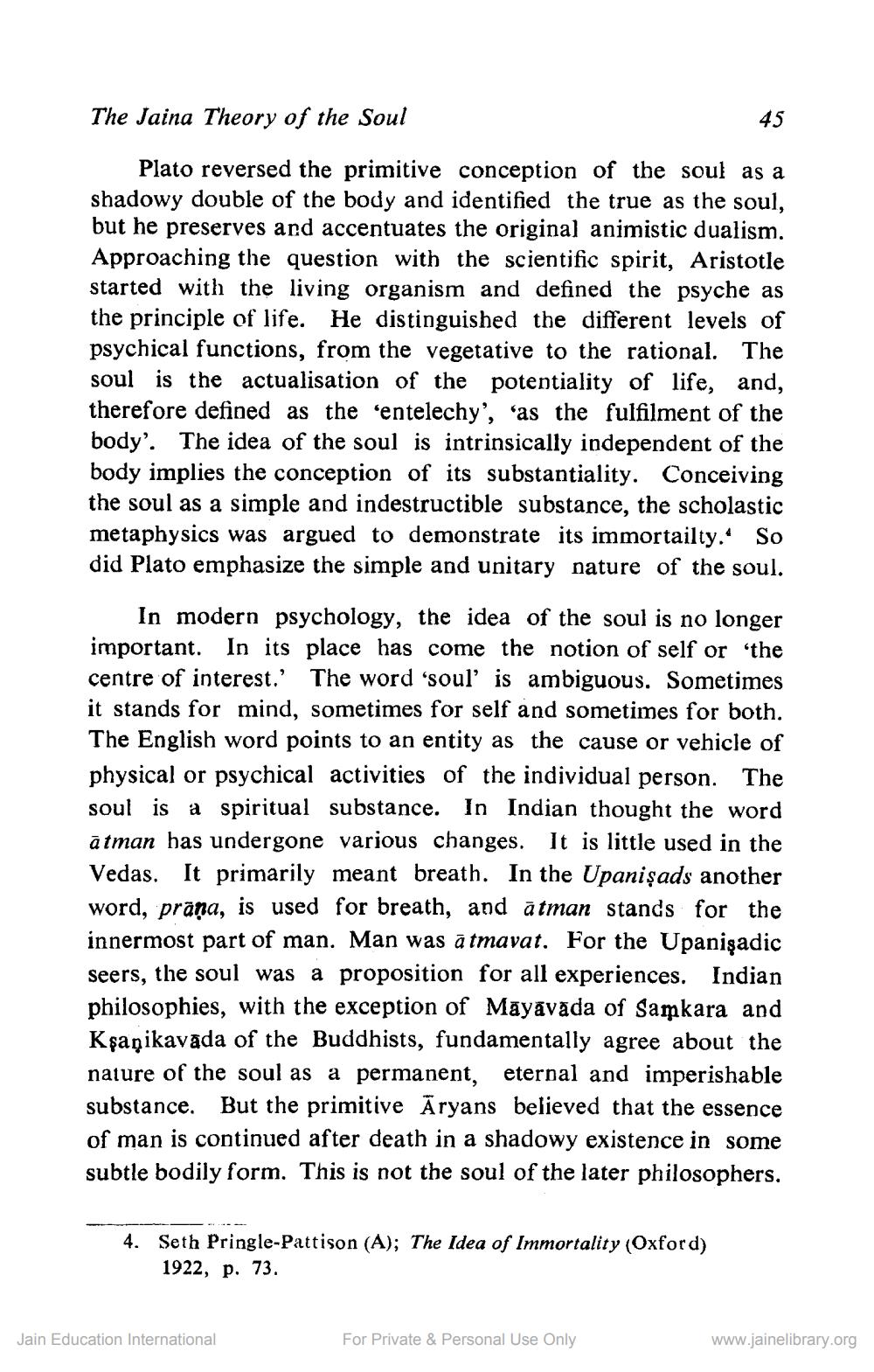________________
The Jaina Theory of the Soul
Plato reversed the primitive conception of the soul as a shadowy double of the body and identified the true as the soul, but he preserves and accentuates the original animistic dualism. Approaching the question with the scientific spirit, Aristotle started with the living organism and defined the psyche as the principle of life. He distinguished the different levels of psychical functions, from the vegetative to the rational. The soul is the actualisation of the potentiality of life, and, therefore defined as the 'entelechy', 'as the fulfilment of the body'. The idea of the soul is intrinsically independent of the body implies the conception of its substantiality. Conceiving the soul as a simple and indestructible substance, the scholastic metaphysics was argued to demonstrate its immortailty. So did Plato emphasize the simple and unitary nature of the soul.
In modern psychology, the idea of the soul is no longer important. In its place has come the notion of self or 'the centre of interest.' The word 'soul' is ambiguous. Sometimes it stands for mind, sometimes for self and sometimes for both. The English word points to an entity as the cause or vehicle of physical or psychical activities of the individual person. The soul is a spiritual substance. In Indian thought the word atman has undergone various changes. It is little used in the Vedas. It primarily meant breath. In the Upanisads another word, prana, is used for breath, and atman stands for the innermost part of man. Man was a tmavat. For the Upanisadic seers, the soul was a proposition for all experiences. Indian philosophies, with the exception of Mayavada of Samkara and Kṣaṇikavāda of the Buddhists, fundamentally agree about the nature of the soul as a permanent, eternal and imperishable substance. But the primitive Aryans believed that the essence of man is continued after death in a shadowy existence in some subtle bodily form. This is not the soul of the later philosophers.
4. Seth Pringle-Pattison (A); The Idea of Immortality (Oxford) 1922, p. 73.
Jain Education International
45
For Private & Personal Use Only
www.jainelibrary.org




